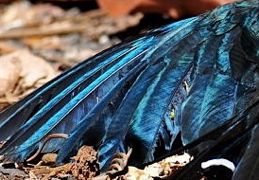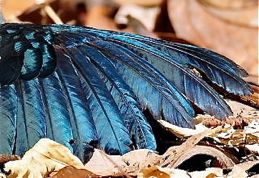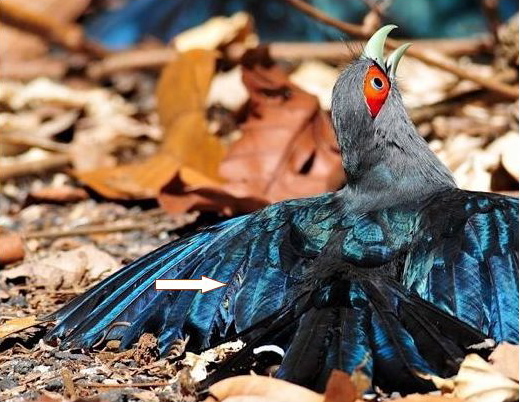An earlier post on the Chestnut-bellied Malkohas (Phaenicophaeus sumatranus) sunning provided the opportunity for us to examine closely the conditions of the wing feathers. We were surprised to see that more than a few feathers were in a bad condition. They were clearly worm out as compared to the other near-perfect feathers (see images below).


.
.
.
.
.
.
.
.
.
Feathers are dead structures. They become brittle with time and get physically damaged when in contact with the surroundings. They are also attacked by various ectoparasites like lice and mites. These parasites feed on the feathers as well as the skin.
Preening, besides keeping the feathers in top condition, helps to physically remove ectoparasites. Another method of parasite removal is anting. This can be active or passive. In the former the bird picks up the ants and place then on its feathers. Passive anting involves the bird lying on an ants’ nest to allow the ants to swarm over its body.
Water bathing, dust bathing and sunning are also methods of keeping the feathers in tip top conditions and to get rid of ectoparasites. Some birds have been reported to place fresh leaves in the nest, leaves that contain specific chemicals that can deter these parasites.
Feather maintenance helps to prolong the life of the feathers. They cannot put off damage indefinitely. So birds moult regularly, whereby damaged, broken or worn out feathers are replaced during the moulting cycle.
KC Tsang & YC Wee
Singapore
May 2008
(All images by KC Tsang)









